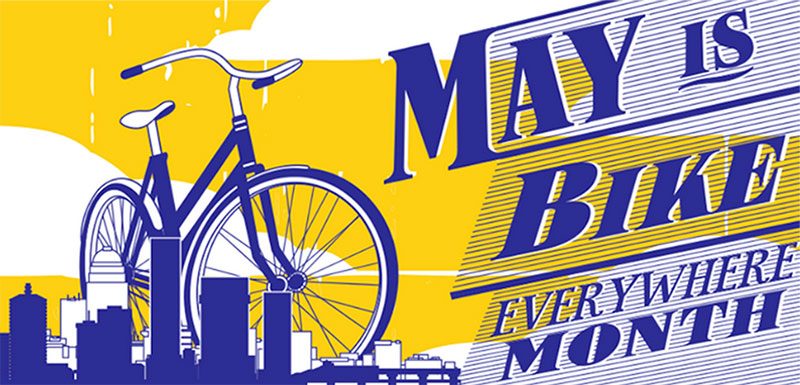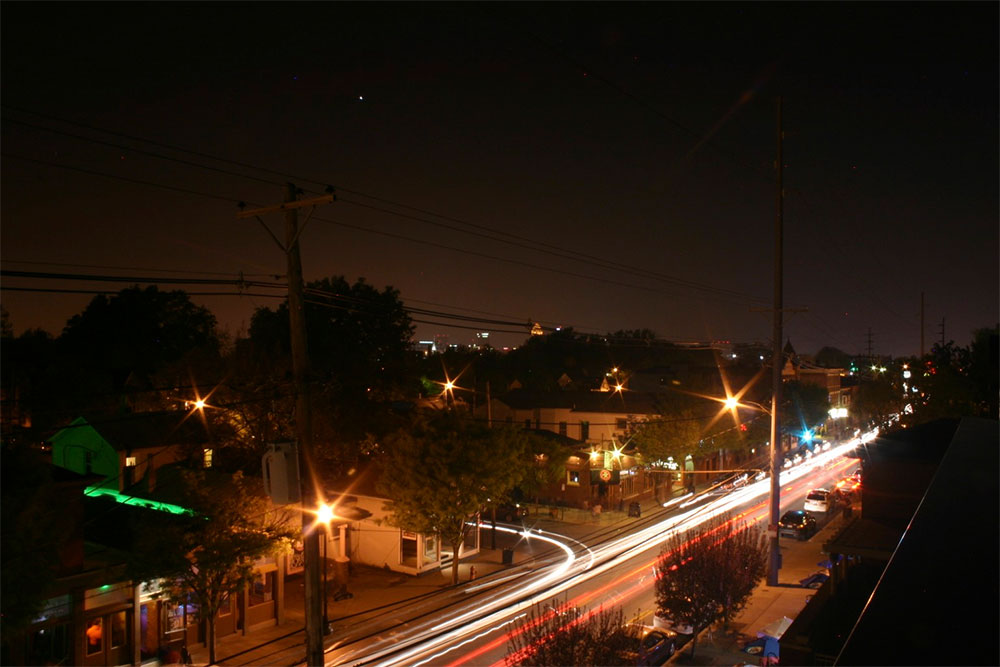May is “Bike Everywhere Month” in Louisville, so here’s what’s going on with bikes in the city.
I’m not one of those cyclists who condemns all motorists, or argues that people shouldn’t ever drive at all. I don’t even wear spandex when I ride. But in recent years I’ve put almost as much mileage on my bike as I have on my car. I’m definitely not the only one, as I notice more and more.
I bought a road-commuter bike when I started grad school in Louisville about four years ago. I did a lot of bike commuting during my undergrad, but I lived in a small college town in the mountains then and I could lumber my mountain bike down a greenway trail that basically took me straight to campus without touching any roads. I didn’t have much experience riding with car traffic, but I wasn’t all that intimidated by it since I’d spent most of my life riding bicycles. However, I perceived a very hostile environment in Louisville back then—there was a serious lack of bike lanes or any other infrastructure that might help a cyclist out. To add to it, I frequently got honked at or yelled at by motorists. A cop even tried to tell me it’s against the law to ride on the road and that I needed to be on the sidewalk (actually, the opposite is true—it’s against city ordinance to ride on sidewalks if you’re older than 11 years). I even got hit by car. I was lucky to come away with only minor sprains and bruises and my bike only got scuffed a bit. It sucked, all the hassle wasn’t much fun, but I still rode.

Things are different now. The city boasts rankings on several “Top Ten Most Bike-Friendly Cities in the US” lists from popular media, as well as a Bronze rating from the American Bicycle League for “bike-friendly community.” The University of Louisville, a significant population node in the urban core, stands out with a Silver rating for “bike-friendly campus.” The climate on the streets is also different. I haven’t been honked or yelled at in ages. In fact, I’ve lately had positive interactions with motorists, if any at all. There are bike lanes, shared lanes, and better maintained separate pathways sprawling across the city.

So what brought about this change? A good part of it is the momentum from other cities all over the United States that have seen rapid increases in bike riders. Bicycling is no longer perceived as solely a recreational activity, and urban bicycle commuters are no longer seen as part of a fringe group. Have we hit the critical mass of riders needed to make real change? It kinda looks like it. One of the most crucial drivers of all this change has been Bicycling for Louisville (B4L), a nonprofit group whose members volunteer tirelessly to make changes happen. In a nutshell, they help steer the city in deciding how to spend infrastructure funding in a way that will actually make a healthier shared public space instead of yet another high-volume, low-velocity corridor for solely cars. One of the biggest reasons why Louisville’s streets feel so different by bike in 2015 is because the physical structures on the streets are quite different than they were four years ago. People live in and move around built environments. If you build an environment that can accommodate bikes and pedestrians, then people in cars won’t be so quick to freak out. Going by the numbers in 2014 alone, B4L was instrumental in an impressive amount of bike-friendly changes (see left).
We’ve come a long way in Louisville, but we still have so much work to do. The city’s budget for bike and pedestrian infrastructure still remains embarrassingly low compared to similarly sized cities. Pedestrian and cyclist injuries and deaths at the hands of motorists still remains alarmingly high (even though it has been on the decline).
Be proud of the attention and progress in Louisville’s bike advocacy community, but don’t rest on your laurels yet. What’s needed are more people participating in the conversation on how our built environment should look. If we can do this, then we truly democratize our shared spaces and make them more sustainable, and more appropriate for all users.
How do you do that? Well, for starters, become a member and/or donate to Bicycling for Louisville if you want them to be a megaphone for your voice. That’s what advocacy nonprofits do, and B4L is unique in that none of the staff take a cut of the funds—it’s an all-volunteer army. You can also get out and ride more. Most trips out of the house are within a three to five mile radius—something that’s fun and easy on a bike, but maybe a bit of a chore on foot. Ride your bike when you’re just popping down the street for a bite to eat, catching a sporting event downtown, or going to a concert. You’ll be happier you did, and the broader impact to making your community more bike-friendly comes from having a critical mass of cyclists on our shared public spaces.
Get your friends in on it too. Word of mouth is still one of the most powerful networks of communication and a big shaper of attitudes and perceptions, even well into the Information Age. And if you’re so inclined to voice your priorities for how your neighborhood should work for you, then say so at any public hearing whenever large infrastructure projects come up.
I won’t even go into the aspects of public, environmental, or economic health that are served by cycling (or any other alternative transportation). This is all about having a safer community with infrastructure that better serves all users. This isn’t an activist or political issue, it’s a fact that urban spaces need to adjust to changing modes of activity. Our roads have remained largely the same in design and function for almost a century and we’re long overdue to redesign and repurpose these antiquarian eyesores. More and more studies are showing that motorists also benefit from increased safety and less expenses when appropriately designed roadways can accommodate cyclists and pedestrians. So just get with it already and ride.
[Editor’s Note: This article was cross-posted from Go Dig A Hole.]



Oh, so this blog moved to wordpress…
I remember a few years ago, at the memorial of that cyclist on btown rd, I got hit when I left. Anyway, another problem is arising with a lot of construction work leaving a few lanes unridable to at least roadbikes.